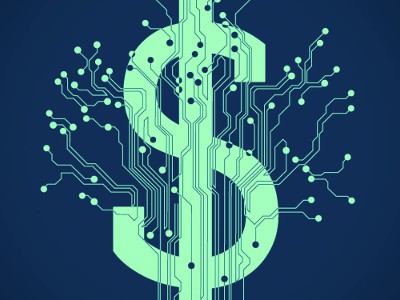
 This report was adapted by Cantech Letter from a piece prepared by Sophic Capital. For the original report, and more in-depth research, please visit Sophic Capital’s website, here.
This report was adapted by Cantech Letter from a piece prepared by Sophic Capital. For the original report, and more in-depth research, please visit Sophic Capital’s website, here.
The stock markets are recovering from summer’s ugly sell-off. Small-cap stocks got slaughtered, and when small-cap stocks get slaughtered, a lot of Canadian small-cap technology stocks are crushed. Summer was no exception and combined with tax-loss selling we think some names are set up well for 2016. Thankfully, at least from a stock-market perspective, summer is over, and investors are starting to get interested in good stocks again. If you’re an optimist, you know the summer slaughter was a temporary blip over the long-term, and small-cap tech stocks are ripe hunting grounds to find multi-baggers, even after the Fall rally.
Top Reasons to Read this Report
⦁ We read a lot about tech and meet with private and public companies to learn from insiders;
⦁ Discover what company characteristics increase the chance of a tech stock succeeding;
⦁ We share some of the best sectors that you should be watching now; and,
⦁ You’ll see the public companies in these hot sectors that look ready to outperform.
Introduction

chance that your tech portfolio will look like this.
Source: PeterVis.com
For over a decade we have followed high tech trends, watching them develop and trying to pick companies that will make big returns for investors. Sometimes we’ve been early; sometimes we have been late; and sometimes we have been wrong. But over the years we have identified the key common factors that increase the chances of small-cap technology companies (and their stocks) succeeding.
Given our focus in Canada, which leaves us with a much smaller universe of technology stocks to buy, our sector knowledge is broad-based and not focused on any single silo of technology. For this reason, the Canadian companies that we detail in this report (Exhibit 1) compete in a portfolio of growth industries like virtual reality, underwater drones (and military technology), Android-based desktop and Wi-Fi phones, anti-counterfeiting technology, user interface (UI) software for cable and IPTV providers, telecom equipment for network efficiencies, and new technologies being deployed in space.
Given the market’s summer pullback, which exaggerated small-cap declines, we highlight several stocks that should be on investors’ radar screens as we move into the end of the year and 2016. Investors should understand that these stocks can be volatile, but we are looking for long-term investments that will benefit from the disruptive nature of their technology and the large market opportunities that these companies are targeting.
Exhibit 1: Canadian Small-Cap Stocks that have Exposure to Key High-Tech Trends

The Method to our Madness
We know that picking winning stocks is not easy, especially when you want to invest in stocks early. While getting in early can lead to extreme profits as companies grow and succeed, there is more risk entering at this stage (Risk / Reward!!). So after we identify the best tech trends, we analyze where they are in the growth cycle. If these high tech trends are in the early stages but are close to or at commercial launch, we move onto finding the technology companies that supply “must-have technology” that should participate in the growth trend. Ideally, we look for the companies that ride the trend by supplying key components or services to the players battling for dominance. These types of companies usually win regardless of which players survive or emerge into the market.
Sophic Capital’s Six Keys that Unlock Small-Cap Tech Returns
There are six key characteristics that we believe increase the chances of buying into winners. While we try to satisfy all of them, sometimes we will settle for four or five out of the six depending on other industry or company characteristics (i.e. a software company that doesn’t patent its software to prevent competitors from working around it). The six characteristics that Sophic Capital looks for are:
1) Disruptive Technology
2) Technology Protection
3) Large Market Opportunity
4) Strong Management Team
5) High Insider Ownership
6) Initial Large Customer Validation
1. Disruptive Technology
Given we are looking for technology’s best stocks, the company’s technology is where we begin our due diligence. Truly disruptive technology is hard to find, but once adopted, it can lead to outsized returns (we will get to this part later). What is disruptive technology? It’s new technology that can create a new (or rattle an) existing industry. For example, the transistor revolutionized electronics, shrinking radios over time so that we could carry them in our pockets. Personal computers made typewriters obsolete. Adios letter writing – here comes email. More recently, the cloud allows access to information and services from any place that has Internet connectivity, saving enterprises money on in-house storage. These are the types of disruptive technologies that have transformed the way we live, usually for the better. Unfortunately, not all disruptive technology survives even if it has changed our lives for the better (see right). As a tech investor, you always have to be on top of what’s going on in your companies’ markets.
2. Technology Protection
The vault where Coca-Cola’s trade secret recipe is stored.Source: The Coca-Cola Company
If a company has disruptive technology, a technology that is going to change the world and creates or disrupts a multi-billion dollar industry, it needs to protect that asset from competitors. Protection can be intellectual property, trade secrets, and technical knowhow. Patents offer good protection in countries where property laws are enforced – the United States grants patent owners 20 years of protection. Even then, patents only inhibit whomever is determined to exploit the technology. And filing in jurisdictions where patent laws are not enforced can be meaningless. An alternative is trade secrets; they can be effective. Take Coca-Cola, whose syrup recipe has been stored in a vault for almost 90 years. Anyone can try to manufacture Coca-Cola, but only the Company knows the true ingredients. Many software companies take the same approach with their code, keeping it secret rather than patenting it.
3. Large Market Opportunity
We recently met with a company that had an outstanding disruptive technology – something neither we nor the world had seen before. All was going well during the presentation – we neatly ticked off our checkboxes and began to salivate. That’s when the CEO told us that the global market opportunity for his new  technology was about $8 million. Thud. After our guests left, we scratched our heads trying to come up with large cross-markets where the technology was applicable. Unfortunately, there were none. A company that can book $8 million of revenue a year is impressive. However, $8 million isn’t exciting to us as people investing in stocks. Nor is $100 million, unless there is a way to capture 100% of the market. Ultimately we need to see at least $1 billion market that can be disrupted by the technology. Although large market opportunities attract a plethora of entrants that could dilute our target company’s net earnings, bigger is still better in terms of market opportunity.
technology was about $8 million. Thud. After our guests left, we scratched our heads trying to come up with large cross-markets where the technology was applicable. Unfortunately, there were none. A company that can book $8 million of revenue a year is impressive. However, $8 million isn’t exciting to us as people investing in stocks. Nor is $100 million, unless there is a way to capture 100% of the market. Ultimately we need to see at least $1 billion market that can be disrupted by the technology. Although large market opportunities attract a plethora of entrants that could dilute our target company’s net earnings, bigger is still better in terms of market opportunity.
4. Strong Management Team
We’ve come across many executives who boast that they are “serial entrepreneurs.” There’s nothing wrong with that, but we want c-level executives at the helm who have built and successfully exited companies (i.e. made investors money). We find that these types of executives build track records and reputations within an industry over decades, staying within their realm of expertise, conveying their passion, and extending their networks. It’s these types of intangible assets, the kind that won’t show up on the balance sheet, that greatly increase the chance of the business succeeding.
5. Insider Ownership
If management isn’t willing to risk their capital in the company, why should you? ‘Nuff said.
6. Initial Large Customer
 One way to validate a company’s technology is to let someone else do it. Strategic investments are one avenue. But many times a $10 million investment from a large investor is vending machine change for them. And although the intent of these investors is to make money, the reality is that they’re probably hoping that one in ten companies they fund becomes a whale while the others fizzle into oblivion. That’s why we prefer a large customer over a large investor. Customers are staking their reputations on the product or services that their suppliers provide. Therefore, an order, especially an order from a large customer, offers third-party validation that a company’s technology is sound and that someone is willing to pay for it.
One way to validate a company’s technology is to let someone else do it. Strategic investments are one avenue. But many times a $10 million investment from a large investor is vending machine change for them. And although the intent of these investors is to make money, the reality is that they’re probably hoping that one in ten companies they fund becomes a whale while the others fizzle into oblivion. That’s why we prefer a large customer over a large investor. Customers are staking their reputations on the product or services that their suppliers provide. Therefore, an order, especially an order from a large customer, offers third-party validation that a company’s technology is sound and that someone is willing to pay for it.
Tech Themes that we Think Investors Should Watch
In this section, we highlight some of the key tech themes where investors should seek exposure in 2016.
Virtual Reality – The Reality of this Market
We believe virtual reality (VR) will be a major technology theme for the next decade. Virtual reality immerses people into computer-generated worlds. Science fiction has been littered with virtual reality references, ranging from the robots in The Matrix, who plugged humans into a computer to keep them mentally stimulated, to Captain Kirk’s holodeck. It has existed since the 1960s but is only gaining traction now.
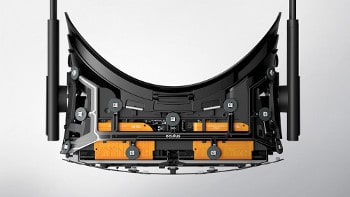
Source: Oculus
The video game industry is a large adopter of the new technology. We attended 3 gaming-related conferences and were “wowed” by the virtual reality platforms – Facebook’s Oculus Rift, Sony’s Project Morpheus (now PlayStation VR), and HTC’s Vive. We spoke to two-dimensional gaming and virtual reality gaming enthusiasts at these conferences, and all were adamant that VR is real. Why? Not only does the gamer become immersed in the computer-generated world but she also feels real emotions such as fear, anxiety, and anger – that’s how real the virtual reality experience is. Virtual reality is the next big thing in gaming, and Sophic Capital estimates that console and PC tethered virtual reality headset sales into the gaming market could reach $6 billion by 2018.
Commercialization of the virtual reality industry is in its infancy. We believe virtual reality will impact the gaming, video, training, travel, and real estate markets to name a few. So investors interested in some of the best tech companies should get exposure to virtual reality today. For more detail on the market and how we are anticipating the market to develop see our previous virtual reality reports below.
Virtual Reality: A Virtual Goldmine for Investors (November 8, 2014)
Virtual Reality: The Industry Forges Ahead (January 9, 2015)
Virtual Reality: It’s Real All Right (March 9, 2015)
Virtual Reality is Ready for Gamers (June 25, 2015)
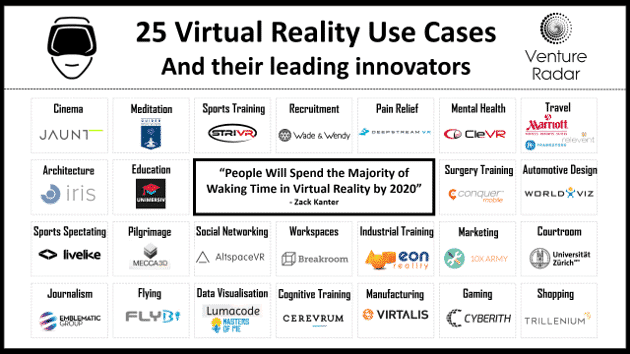
Exhibit 2: Some Public Companies with Exposure to Virtual Reality

Augmented Reality – Potentially Bigger than Virtual Reality
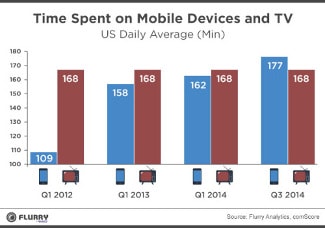
Augmented reality (AR) is the generation of computer-generated images and data onto the real world. Augmented reality glasses could replace smartphones and tablets one day. This is what a panel of experts stated at the NeuroGaming Conference in May. Given that Americans now spend more time interacting with their mobile devices than their televisions, it isn’t difficult to fathom that integrating the majority of the functionality of the mobile device directly into your periphery is the next step (as frightening as this may seem to some people). While today augmented reality glasses remain somewhat bulky with their cameras, microphones, batteries, speakers and cables, we believe form factors will continue to evolve and eventually become stylish fashion accessories.

Many industry analysts forecast that augmented reality will be a larger market than virtual reality. Although we agree with this sentiment, we believe that widespread consumer augmented reality adoption is likely several years away. But there are public ways to play this space; large tech bellwethers like Google (NASDAQ:GOOG), Intel (NASDAQ:INTC), Facebook (NASDAQ:FB), and Qualcomm (NASDAQ:QCOM) have invested in augmented reality companies. For an in depth look at the industry see our report “AUGMENTED REALITY: GLASSES GETTING CLOSER TO REALITY” published on June 15, 2015.


Anti-Counterfeiting Technology – Needed Now!
Counterfeiting is a high-margin $654 billion growth industry largely run by criminal organizations that have few disincentives to stop. About $200 billion of fake pharmaceutical drugs are sold annually. To put this number into perspective, the global illegal drug trade is estimated at $246 billion. With everything getting counterfeited these days, we believe branding and authenticity are top of mind for luxury brands, governments, and food and drug companies. This is not a market that many people are talking about, and to be honest we wouldn’t either if it wasn’t for the background research that we conducted on Nanotech Security (TSXV:NTS), a Sophic Capital client that is commercializing a new, disruptive, anti-counterfeiting technology for the banknote, high security document and consumer packaging markets. More on Nanotech Security later in this report.
Given the International Chamber of Commerce’s forecast that the global counterfeiting and piracy could be a $1.7 trillion industry in 2015, we believe spending on anti-counterfeiting security is going to increase over the next several years. And although there aren’t many ways to publicly invest in anti-counterfeiting technologies, we like the theme and have written several reports on different market opportunities and competing technologies.
Counterfeiting: An Industry 3 Times Larger than the Illicit Drug Trade (October 27, 2014)
Counterfeit Money: Keeping a Step Ahead of Criminals (January 7, 2015)
Counterfeit Pharmaceuticals (April 8, 2015)
Most people think that money is the largest counterfeit industry – that’s not true. Counterfeit money is a small market, especially when compared to counterfeit pharmaceuticals and other packaged goods, but once selected, security features can be on notes for over ten years. The reason is simple: Governments do not want their fiat currencies undermined, and keeping legacy security features that citizens know how to recognize is a way to minimize the circulation of counterfeit notes. Protecting the “word” of the government is paramount to maintaining confidence in governments, especially the populace who elect politicians. Given this, issuing authorities are actually at the forefront of adopting anti-counterfeiting technologies and evidence bears out their success. From 2005 through the first half of 2014, the Bank of England removed £81 million of fake notes from circulation. In the last fiscal year, U.S. authorities recovered about $89 million in counterfeit money. In the last fiscal year, U.S. authorities recovered about $89 million in counterfeit money. And using European Central Bank data, we estimate that about €17 million worth of fake Euros were recovered in the second half of 2013. We admit that these numbers represent only what was recovered and not what is in circulation. However, the numbers are low compared to counterfeit packaged goods – the U.S. Customs and Border Protection alone seized $1.7 billion in counterfeit goods in 2013 (up from $1.2 billion in 2012).

Next Generation VoIP Phones
“Hold on a moment, and I’ll transfer you over” – the most dreaded words in an office. Everyone who has worked in an office with an enterprise desktop phone has uttered those words. Beyond touch-tone dialing and Voice-over-IP (VoIP), desktop phones haven’t evolved much. Those touch-tone beeps replaced the clicking analog dial. VoIP facilitated voice and multimedia Form factors and features like conference-calling crept into those big, bulky, blocks of plastic, but their functionality didn’t change significantly. What if we could replace those legacy phones with devices that had user-friendly apps; devices that communicate using the Internet; devices that use Wi-Fi to replace those tangled cables?
Although voice network data has been around since the early 1970s, VoIP still has a lot of growth left. According to Future Market Insights (FMI), the corporate consumer VoIP segment in 2012 had 98.9 million subscribers worth about US$43.27 billion of the total global VoIP services market. FMI also forecasted that by 2020, these numbers would increase to about 204.8 million subscribers and US$86.20 billion. In the phone-to-phone VoIP segment, the firm also noted that in 2012 35.9 million subscribers accounted for US$15.88 billion, and they should scale to 116.5 million subscribers in 2019 who generate US$44.78 billion of revenue.
Transparency Market Research believes the global VoIP services market will grow at a 9.7% CAGR from 2014 to 2020. The research firm states that the 2013 market was worth US$70.90 billion and will increase to US$136.76 billion by 2020 with 348.5 million subscribers. Smartphones and tablets, both consumer and enterprise, will help drive the growth.


Drones – You Have to “Sea” this Investment Opportunity
Like many new technologies, drones came out of the military where vast R&D budgets brought the concept into reality. Over time, the components came down in price bringing new products into the industrial and, more recently, consumer markets. Every day now, we read articles about new drone applications like Amazon transporting goods with drones, film producers getting shots they were never capable of before, and (what we think is the best drone application) – Uber delivering ice cream in Singapore. While many investors have made a lot of money in the military aerial drone space – and we still see this vertical growing for many more years – we believe the nascent industrial and consumer segments are where investors will make bigger returns. But we believe there is an entirely new drone market segment where investors can get in on the ground floor…

As lucrative as the aerial drones market is, Sophic Capital thinks that the highest drone returns could be made in the sea. Water covers about 71% of the Earth’s surface, with our oceans holding over 96% of that water. Yet less than 5% of the seabeds are mapped (never mind everything between the seabed and the surface). This is important because the seas are the next frontier for harvesting metals, oil and gas, and wind power, for example. Yet, the seas are also the planet’s most hostile work environment. Hence, companies are turning to unmanned underwater vehicles (UUVs) to undertake the most dirty and dangerous work underwater. For this reason we like this sector and have detailed the market opportunity and some investment ideas in our report “Drones: A Rising Market” published on September 8, 2015 and a second report focused specifically on underwater drones, “From Air to Water” published on September 14, 2015.

Internet of Things – Measure it, Optimize it
In 1982, a Coke machine at Carnegie Mellon University became the first appliance connected to the Internet. It sent reports about stock levels and whether or not newly loaded drinks were cold. The Internet of Things (IoT) attaches unique identifiers to people, animals, and objects, allowing them to automatically transfer data over the Internet without the need for human-to-human or human-to-computer interaction. According to Cisco Systems, the number of connected devices exceeds the number of people by a factor of 1.5 to 1. Excluding PCs, tablets and smartphones, Gartner predicts that the installed base of “things” will grow from 0.9 billion units in 2009 to 26 billion units by 2020.
There are many ways to make money on this growing high tech trend. First, there are the companies that make the wireless, networking, communication, and hardware chips that enable “things” to connect to the Internet. Second, there are the security companies that safeguard our privacy, safety, and possessions. Third, there are the analytics companies that convert the data from these connected devices into information. Fourth, there are the systems integrators and cloud services that will help people and enterprises to build IoT ecosystems. Exhibit 8 shows the IoT potential economic impact across several adopters.
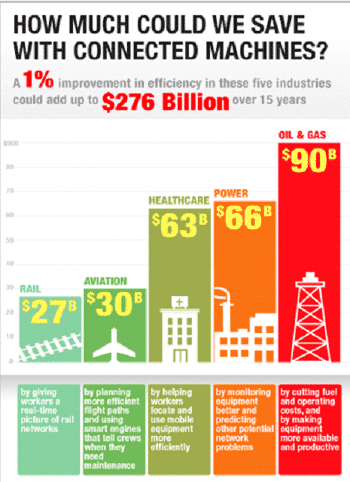
“I know exactly what is happening on my plant floor” – don’t believe it. This is the perception of many people who work within manufacturing facilities. However, many have no basis to reach this conclusion. It’s a problem prevalent in the manufacturing industry. Machines and robots manufacture almost everything we use. And although these machines are reliable, few are monitored for efficiency. And if something isn’t monitored, it cannot be optimized. We believe that industrial IoT will have a big impact that will likely reward investors handsomely. Major machine manufacturers are modifying their machines to accommodate monitoring, but the majority of machines in use today aren’t exploiting this ability. Later on in this report, we highlight MEMEX Inc. (TSXV:OEE), a company disrupting manufacturing facilities by helping machines to “talk.”
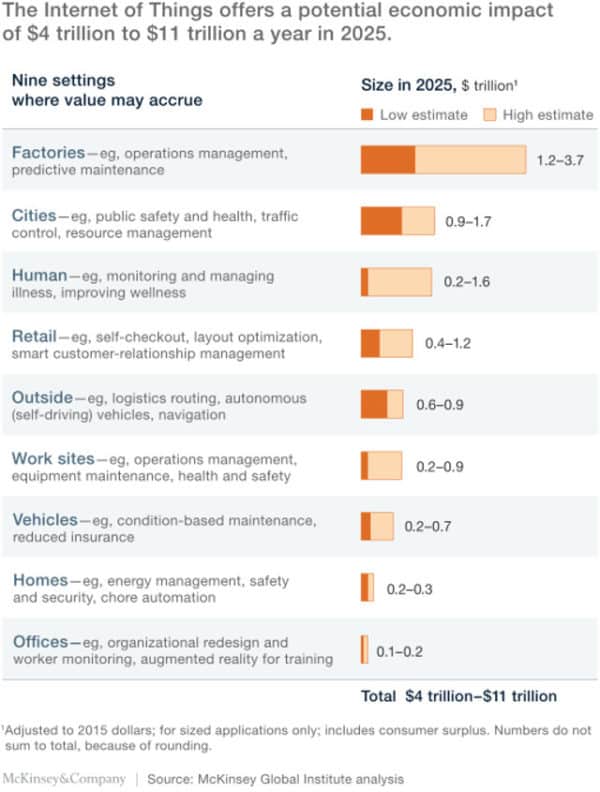

Internet Security – Protecting your Data; Preserving your Rep.
Target (NYSE:TGT) was vilified for an information breach of 70 million customers, a breach the Company estimated cost $148 million and agreed to pay $10 million in a related class-action lawsuit. Dating website Ashley Madison was hacked, compromising the profiles of 7 million users. As if this wasn’t bad enough, two hackers demonstrated the ability to hack Jeep Cherokees and take control over them. What’s next? God forbid, planes, or more instances where creeps hack into a baby monitor to shout obscenities?
Globally, one billion data records were compromised in 2014. Internet security is a theme that is going to last for a while because corporations, governments and individuals are going to invest in securing their networks, data, and devices. Research and market intelligence firm Gartner estimates that global spending on information security will be a $76.9 billion market in 2015. We think investors should be looking for exposure to this market, which should keep generating returns as the circular battle between hackers and end users continues.
And as an addendum to the scale of the problem, we provide some malware statistics. Malware is software used to damage or disable computers and computer systems. In 2014, coders created 317 million new pieces of malware – almost 1 million pieces per day – bringing the total number of malware programs in existence to about 1.7 billion.
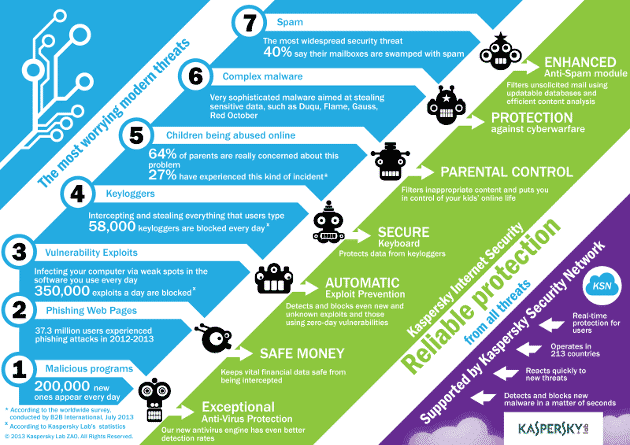

FinTech – New Ways to Transact
Investments in the Financial Technology (FinTech) space quadrupled from just over $3 billion in 2013 to over $12 billion in 2014. We aren’t talking about investments in bank security or accountant laptops – FinTech relates to the disruption of traditional ways things are done in traditional financial industries.
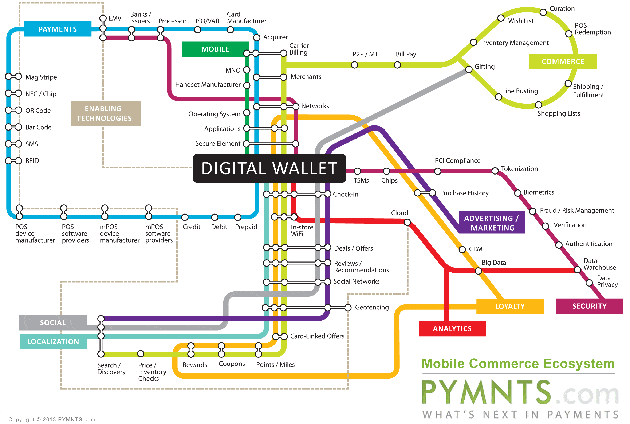
Source: Perficient
Money is now stored as digital data. And with mobile communications, we can access and/or carry that digital data anywhere. This fluidity of money compounded by distrust in financial institutions since the 2008 financial crisis is what drives many FinTech entrepreneurs to create companies, applications, and financial services that simplify and secure transactions. FinTech covers the spectrum of financial services – lending, personal banking, payments, retail and institutional investments, equity financings, equity crowdfunding, research, infrastructure, and remittances.
“We owe it to ourselves, our customers, our clients and our shareholders to cast a wide net and find new ways to solve existing and new challenges. Engaging with the start-up and venture capital community forces us to think about innovation in a different way, more revolution than evolution.” This is the view of David Reilly, a technology infrastructure executive at Bank of America. It’s odd that traditional financial institutions would invest in FinTech companies determined to steal their business, but this is exactly what’s happening (Exhibit 11).
Non-financial corporations are investing in FinTech companies (Exhibit 12). Although most FinTech investment comes from the financial services sector, tech companies are pouring money into FinTech with Google Ventures leading the way since 2010. Why? Perhaps to expand these companies’ products and services. Google, for example, invested in Kensho, a firm pioneering real-time statistical computing systems and scalable analytics architectures—the next-generation of improvements to the global financial system. Intel Capital invested in iZettle’s €40 million series-C round. Stockholm-based iZettle creates card readers for mobile device payments and develops sales tools. Maybe Intel sees iZettle as a part of a global wallet strategy.



EdTech – Going Mobile
One of the biggest educational tech trends has been the move to mobility, both inside and outside of the classroom. Tablets, phablets, laptops, and smartphones are commonplace for students to access outside of school. And schools saw the potential to leverage these devices as learning tools. To meet this objective, educational facilities have embarked upon 1:1 initiatives, where the institution provides standard mobile devices to students, and bring-your-own-device programs, where students furnish their own preferred devices.
“Collaboration” is another key theme in education. Simply put, collaboration allows students to work together and engages teachers with students (i.e. sharing content, assessing their understanding, getting students’ feedback, etc.). Technology – especially mobile devices – facilitates collaboration. Students can log onto a cloud-service provided by the school district and download projects, collaborate in the classroom (or remotely), and submit their work to the teacher for evaluation.
Mobile and collaboration require management tools and educational apps for teachers to succeed. Not all students engage in lessons and instead turn to mobile devices to chat on Facebook, check Twitter, and message their friends. And in situations where students bring their own devices, the disparate operating systems and hardware platforms may not work well together, creating administration, support, and management nightmares for educators. If these devices cannot communicate and synchronize together, then collaboration becomes nearly impossible. What is needed is classroom management tools that bind different devices and control the content students can access.

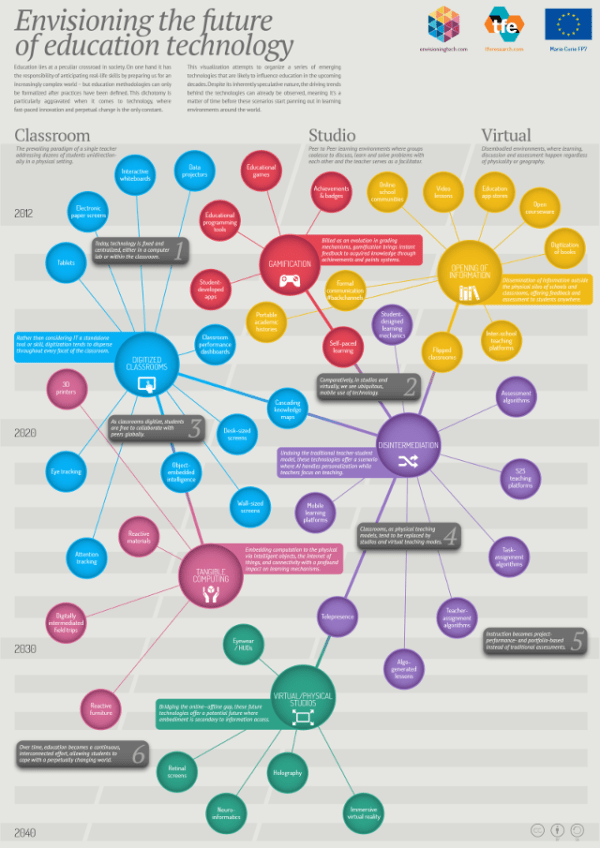
Batteries and Energy Storage

Source: U.S. Department of Energy
Electricity grids around the world have been adding renewable assets like wind and solar, which is great for reducing CO2 emissions and meeting targets for renewables around the world. The problem is that the majority of these power generating assets are intermittent and may not generate power when it is needed. One way to help balance the load of the grid is to add storage – preferably with green technology.
Power generation is largely an issue of demand; electricity must be produced at the exact same time it is used. And when green power is not constant or reliable (clouds block solar panels, tempered wind speeds cause wind turbine rotation to slow), fossil-fuel- and nuclear-based generation take up the slack. What utilities need is a way to store unused green energy in order to minimize the reliance on traditional power-generation fuels. Energy storage systems (ESS) designed with lithium-ion batteries is about to help.

Electric vehicle (EV) manufacturers have a big stake in evolving battery technology. Government incentives and the need to wean off fossil-fuels have spurred EV consumer demand. However, sticker shock prevents many consumers from purchasing EVs. To meet demand and to lower EV pricing, EV and battery manufacturers are investing in R&D to squeeze possibly another 30% of energy capacity by weight. Should they succeed, this optimization could reduce the volume and weight of lithium ion-batteries (LiB) and make EV pricing more competitive to combustion engine vehicles. Tesla Motors (NASDAQ:TSLA) is certainly on board with EV R&D and manufacturing.

Source: Tesla Motors
On September 4, 2014, Tesla Motors announced a $5 billion investment in a LiB plant. Tesla chose Nevada to build the plant, called “The Gigafactory,” which Tesla expects will manufacture 50GWh of annual capacity by 2020 – enough for 500,000 Tesla cars. Tesla CEO Elon Musk stated that the plant could drive down LiB costs by 30% through scale. And Tesla isn’t the only big auto manufacturer that needs LiBs; Nissan, Renault, Ford, GM, Audi, Toyota, Honda, Daimler, BMW, Mitsubishi, Fiat, Hyundai, Kia, Volkswagen, Porsche and Volvo all require improved battery storage for their EVs too.

3D Printing – A New EdTech Tool
Three dimensional (3D) printing is an additive manufacturing process that is the opposite of how carpenters and machinists work with materials. Carpentry and machining are subtractive manufacturing trades where materials are removed to make a finished product. For example, a carpenter sandpapers a piece of oak to make it smooth; a machinist shaves curls from a spinning metal bar to create a drive shaft.
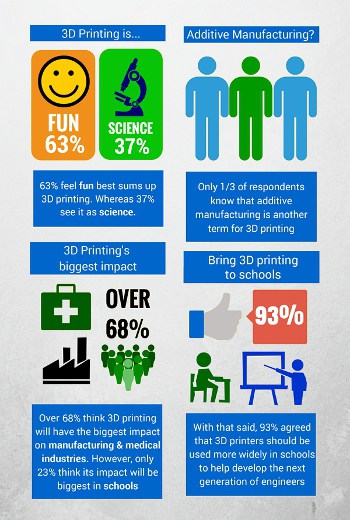
After the meteoric rise in 3D printing stocks until the end of 2013 (Exhibit 16), the subsequent crash of industry leaders like Stratasys (NASDAQ:SSYS) and 3D Systems (NYSE:DDD) makes it seem as though 3D printing has come and gone. This is mostly due to overexcitement by Wall Street, 3D printing quality issues, as well as slower than anticipated market penetration. That said, we actually think that 3D printing remains an interesting sector that investors should watch. At some point (perhaps right now) these stocks will be as oversold as they were overbought, which would make them attractive investments. Through the years, we have seen this overbought to oversold trend many times, and we would argue that we are now in the phase where long-term investors can do very well over the next several years in this sector, a sector that remains in growth mode. Investors may want to wait for the group to start turning around before investing in the sector. Choose wisely when ready.

As Exhibit 17 shows, 3D printing in the education sector is climbing the hype curve toward the peak of inflated expectations. We agree with this for several reasons. First, like the rest of the population, the majority of teachers aren’t early adopters of technology. Most neither understand 3D printing nor how to use it. Second, even for those early adopter teachers, little content exists to develop curricula. That means teachers have to create content themselves, which is difficult when the majority of teachers don’t understand the technology. Third, many teachers refuse to learn new technologies. According to Martin Stevens, CEO of It Is 3D, a 3D technology company for education in the U.K., “…you have 20% [of teachers] at the other end of the curve, who say ‘I’m going to be retiring in the next fifteen years, I don’t have time to learn this’.”


Our Clients
Below, we highlight our clients and the reasons why they fit into our investment selection model.
Nanotech Security (TSXV:NTS; OTCQX:NTSFF) – Anti-Counterfeiting Technologies

Nanotech Security’s technology is KolourOptik™, a, nanotechnology solution based upon the optical properties of the blue morpho butterfly. KolourOptik™ creates a grid of nano-sized holes that replicate the interaction light has with this butterfly’s wings. The result is the creation of vibrantly-coloured images that appear similar to LEDs when illuminated.
Currently targeting the banknote industry, KolourOptik™ can be applied to a variety of surfaces including pills and any type of consumer packaging. There is no additional need for dyes or pigments. Any packaging company can even embed data in the design thereby allowing all points in the supply chain to track and authenticate their products.
KolourOptik™’s is nearly impossible to duplicate. Unlike holograms, which can be peeled off, KolourOptik™ images are embedded into the packaging.
 KolourOptik™’s eye-catching features engage end-users. Whether it’s on banknotes, liquor bottles, or pills, the key to a successful anti-counterfeiting technology is getting the end-user to engage. KolourOptik™’s LED-like vibrancy pops and draws the user to interact with it. Thus, we believe companies would only have to issue one campaign, detailing the differences between traditional holograms and KolourOptik™ technology. It wouldn’t matter what image or text is embedded on the package since KolourOptik™’s features are unique in anti-counterfeiting technology.
KolourOptik™’s eye-catching features engage end-users. Whether it’s on banknotes, liquor bottles, or pills, the key to a successful anti-counterfeiting technology is getting the end-user to engage. KolourOptik™’s LED-like vibrancy pops and draws the user to interact with it. Thus, we believe companies would only have to issue one campaign, detailing the differences between traditional holograms and KolourOptik™ technology. It wouldn’t matter what image or text is embedded on the package since KolourOptik™’s features are unique in anti-counterfeiting technology.
On August 26, 2014, Nanotech announced the acquisition of Fortress Optical Features that expanded the Company’s product line beyond KolourOptik™. This acquisition moved Nanotech into the optical thin film space, a technology developed by the Bank of Canada and sold to Fortress in 2011 yet utilized by 11 international currencies. This technology produces vivid and bold colour shift thin films for banknote security threads.
Nanotech expects to increase its presence in the thin film market, with an initial focus on banknotes. But the Company is also working on layering KolourOptik™ on top of the optical thin film technology to create an even more secure banknote feature with multiple levels of interactivity and authentication.

Spectra7 Microsystems (TSX:SEV; OTCQX: SPVNF) – VR & AR
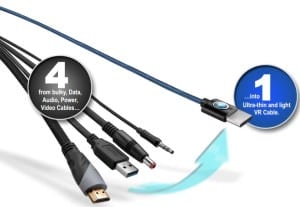
Spectra 7 Microsystems designs ultra-thin interconnects for the virtual reality and augmented reality markets. Spectra7 is not a virtual reality headset manufacturer but instead provides chips that reduce the weight and thickness of cables used on VR headsets. The Company’s chips accomplish this without sacrificing the high speed video, data and audio quality required for the best user experience. Spectra7’s VR7100 DisplayDirect™ specifically targets virtual reality headset cabling by condensing four bulky cables (HDMI, USB, audio, and power) into a single, ultra-thin virtual reality cable.

Source: iFixit.com
Why is this important? Many virtual reality headsets are tethered to a computer or other hardware, and four cables introduce significant weight and mobility issues. Less is more in terms of cabling, and Spectra7’s VR7100 achieves this without sacrificing performance. In fact, the VR7100 provides more performance in a smaller package making it one of the most important components in high-end virtual reality hardware. But we’re not the only people who hold this opinion…
Spectra7 Microsystems’ VR7100 powers Facebook’s Oculus virtual reality headset. iFixit’s teardown of the Oculus Rift uncovered the chip (top right photo) and caused them to comment that it was, “Hot stuff!”
On June 5, 2015 Spectra7 announced the availability of AR-Connect™, the industry’s first and only integrated cable, connector and embedded chipset product line for augmented reality vision systems and wearable computing devices. In the same press release the Company announced multiple design wins and over $1 million in orders in the second half of May alone. Based on what we saw at the Augmented World Expo conference in June 2015, several augmented reality glasses could use Spectra7’s technology to reduce the number of cables and achieve an industrial design that is palatable for mass adoption.
AR-Connect™ enables augmented reality glasses to connect to a smartphone, proprietary processing device, or a desktop graphics/laptop processing unit with a single unified and ultra-thin link. Interconnect weight, diameter, speed, and low distortion are critical to augmented reality interconnects. Spectra7’s AR-Connect™ interconnects enable original equipment manufacturers to meet these design goals with the Company’s patented embedded high speed active signal processing technology. The Company’s technology delivers a dramatic reduction in the number of cables required by up to a factor of four, increases video throughput by up to 100%, and enables up to a tenfold increase in sensor/gesture backhaul data throughput while simultaneously reducing the cable conductor cross sectional area by up to 90% compared to discreet, passive interconnects.

Kraken Sonar (TSXV:PNG) – You Have to “Sea” this Hot Market
Kraken Sonar Systems, a Sophic Capital client, is a marine technology company engaged in the design, development and marketing of advanced sonar and acoustic velocity sensors for UUVs used in military and commercial applications. The Company is recognized as a leader in synthetic aperture sonar (SAS), a disruptive military technology now available for commercial applications. The Company is also moving from components to full systems like the recent announcement of their own towed vehicle called the KATFISH. Subsequently, a major international defense contractor awarded Kraken with a $1.5 million contract for KATFISH, an order that could scale to $2 million once spare parts and support are factored in. This contract followed a $750,000 grant received from the Newfoundland and Labrador government.
AquaPix® is Kraken’s 3D bathymetric sensor. AquaPix® can provide detailed images with a resolution better than 3cm out to a range of 300 meters from each side of an underwater vehicle. The sensors can be integrated into AUVs, ROVs, and towed bodies. Kraken recently won a contract for AquaPix® from ECA Robotics of France. The US$325,000 contract will see AquaPix® integrated into ECA’s newest A18D AUVs.
In 2013, a Cooperative Research and Development Agreement with the U.S. Navy’s Naval Undersea Warfare Center was successful. The tests involved 26 AUV missions where Kraken’s AquaPix® generated high resolution imagery to ranges as distant as 200 meters from the sensor.

Source: NavalDrones
In April 2015, Kraken announced AquaTrak™, an underwater navigation system that processes sensor data to create a correlation velocity log (CVL). Correlation velocity logs apply signal processing techniques to successive SAS pulses received by sensors. Legacy technology relies upon Doppler velocity logs (DVL) that measure the speed of echoes reflected from the seafloor. Due to the fact that electromagnetic waves have poor propagation characteristics in seawater, CVL has an important advantage over DVL; CVL can operate at lower frequencies that propagate better through salt water. This facilitates wider signal beams, deep water operation, higher accuracy, and lower power consumed. Management plans to start selling AquaTrak™ by Q4 2015.
Kraken acquires an underwater robotics firm to accelerate its sensors-to-systems strategy. On November 17, 2015, Kraken announced that it acquired the underwater robotics technology and related intellectual property rights previously owned by Marine Robotics Inc.

Apivio Systems (TSXV:APV) – Pick up the Phone
Apivio Systems, a Sophic Capital client, develops phones and applications for the enterprise and consumer VoIP markets. Apivio has sold more than 4.5 million handsets, mostly in Asia. The Company offers three families of phones: Dexter IP phones, Monet Android-based, video phones, and Liberty Wi-Fi phones. The Dexter series is a legacy desktop IP phone that provides the foundation for the Company’s revenues and earnings. Currently, the Dexter series is sold in South Korea to several of the country’s telecom carriers. This business on its own generated $46 million in revenue and EBITDA of about 10% last year and grew at 32% year-over-year.

Apivio Systems is currently using the earnings from the legacy business to fund R&D and sales and marketing for the newer Monet series. These Android-based video smart phones are meant to replace legacy desktop phones, and this segment of the business offers a significant growth opportunity for the Company. Apivio has partnered with NEC America, who have committed for 20,000 Android VoIP phones. Much like the way smartphones disrupted the cell phone market, Apivio is looking to disrupt the desktop phone market by adding desktop functionality to improve productivity and efficiencies in the enterprise. While initial revenue will be derived from the hardware sales, the Company plans to monetize applications that should generate high-margin, recurring software revenues. Part of Apivio’s strategy is to sell to OEMs rather than enterprises; other NEC subsidiaries are also interested in selling Apivio phones in other countries outside of the US.
Apivio’s Liberty phones are mobile Wi-Fi phones targeted at both enterprises and consumers. As long as Wi-Fi is available, Liberty gives freedom to roam anywhere in the world without getting those nasty surprise telecom bills. Apivio has sold about 150,000 Wi-Fi phones into the South Korean market.
Although network voice protocols have been around since the early 1970s, VoIP has a lot of room to grow. According to Future Market Insights (FMI), the corporate consumer VoIP segment in 2012 had 98.9 million subscribers worth about US$ 43.27 billion of the total global VoIP services market. FMI also forecasted that by 2020, these numbers would increase to about 204.8 million subscribers and US$86.20 billion. The firm also noted that in 2012 35.9 million subscribers the phone-to-phone segment accounted for US$15.88 billion, and they should scale to 1156.5 billion subscribers in 2019 who generate US$44.78 billion of revenue. The 58.3 million computer-to-phone subscribers in 2012 created US$27.35 billion of revenue, and they could grow to 128.3 million by 2019, accounting for US$56.56 billion of revenue.
Transparency Market Research believes the global VoIP services market will grow at a 9.7% CAGR from 2014 to 2020. The research firm states that the 2013 market was worth US$70.90 billion and will increase to US$136.76 billion by 2020 with 348.5 million subscribers. Smartphones and tablets, both consumer and enterprise, will help drive the growth.

Other Canadian Technology Stocks We Like
Sophic Capital keeps abreast of most public, Canadian technology companies. Given this, we highlight the following companies that fit nicely within the technology themes we have identified.
MEMEX Inc. (TSXV:OEE) – IoT to Monitor Industrial Machines
For the manufacturing industry, IoT has the potential to grow from $42.2 billion in 2013 to $98.8 billion in 2018 (18.6% CAGR). IDC, the research firm that created the forecast, believes that efforts to increase efficiency and link islands of automation on the factory floor will be the drivers behind this growth.* Exhibit 23 details some of the reasons why manufacturers are considering IoT solutions. So how can investors participate in the enormous Industrial Internet of Things market?
*As an aside, IDC foresees connected vehicles as the largest growth IoT market with the market potentially growing 34.8% year-over-year in 2015.

MEMEX Inc.’s flagship product MERLIN is an industrial-strength shop-floor-to-top-floor communications platform that massively boosts productivity in highly competitive, data-driven manufacturing companies like Mazak, Magellan Aerospace, and Milwaukee Tool. MERLIN software allows factories to monitor productivity and Overall Equipment Effectiveness (OEE) metrics anywhere in real-time. Proven in single and multi-plant installations on three continents, MERLIN delivers a 10% to 50% average productivity increase, earns 20%-plus profit improvement based on just a 10% increase in OEE, consistently achieves payback in less than 4 months with an Internal Rate of Return greater than 300%, and connects to any machine, old or new. With MERLIN, the productivity promise of Industrial IoT isn’t a theoretical construct – it’s a real-time reality.
Espial Group (TSX:ESP) – Helping Services Providers Catch Up
Espial develops and markets television browser and software solutions to electronics manufacturers and telecommunications service providers. With Espial, video service providers can create responsive and engaging subscriber viewing experiences incorporating intuitive content discovery and instinctive navigation. The Company provides digital and internet protocol television software and solutions to cable multiple-system operators. The Espial TV Browser allows Smart TV manufacturers to provide a full web experience on TVs, set-top boxes, and digital media adapters. The Espial Media Service Platform and Espial MediaBase Platform enable the delivery of TV Everywhere and IPTV services over Internet Protocol broadband networks.
TIO Networks (TSXV:TNC) – Fast, Easy, & Secure Bill Payments
TIO Networks is a cloud-based multi-channel bill payment processor providing secure access to consumers via mobile, web, walk-in and kiosks. The Company serves telecom, wireless, cable and utility bill issuers in North America, and its subsidiary Global Express Money Orders Inc. is licensed to sell money orders in 13 states and the District of Columbia. TIO claims 70,000 endpoints in its processing network, $6 billion of bill payments processed annually, over 10,000 billers, and millions of transactions per month.
Sandvine (TSX:SVC) – Monitoring Data
Sandvine Corporation develops and markets network policy control solutions for high-speed, or broadband, Internet service providers. The Company’s products include Business Intelligence, Service Creation, Revenue Generation, Traffic Optimization and Network Security. Sandvine’s Network Policy Control hardware/software solutions provide a system for broadband Internet service providers to identify, report on, and take action on the data traversing their networks. Following two quarterly misses, the Company has recently announced $15 million of new orders.
Urthecast (TSX:UR) – Watching the World
UrtheCast is developing the world’s first Earth video platform. Working with prominent aerospace partners, UrtheCast has built, launched, installed, and operates two Earth observation cameras (one Ultra HD and the other a medium resolution) on the International Space Station (ISS). Video and imagery data captured by these cameras is downlinked to ground stations and distributed to partners and customers, or displayed on the UrtheCast web platform. UrtheCast also announced plans to develop the world’s first commercial optical+SAR Earth observation constellation, slated to be launched in 2019 and 2020. The Company is looking to ink deals with multiple governments globally to fully fund the deployment and also has the ability to recognize revenue during the build out phase expected to begin in late 2016 and early 2017. In combination with UrtheCast’s suite of cameras aboard the ISS and the two recently-purchased Earth observation satellites, the UrtheCast Constellation will help the Company realize its vision of democratizing the view of Earth from space. To make these powerful resources more accessible and user-friendly, UrtheCast’s web-based platform will harness the cloud to provide access to camera tasking, data archives, analytics, and specialized Earth observation applications. By opening up access to its deep trove of Earth observation data, UrtheCast will allow organizations and individuals alike to monitor the environment, manage humanitarian relief efforts, organize social events, manage natural resources, and much more.
MediaValet (TSXV:MVP) – Photographic Memory
MediaValet, formerly VRX Worldwide Inc., delivers cloud-based digital asset management and global content production services to the manufacturing, healthcare, resource, agricultural, consulting, consumer, travel, and hospitality brands. Through its wholly owned subsidiary VRX studios Inc., MediaValet creates, manages, and distributes rich media content that educates online travel consumers. In addition to its production abilities, VRX owns an archive of premium content of hotels, cruise ships, attractions and destinations. Through these content services and product offerings, VRX provides a comprehensive set of content solutions for the online travel industry.
VersaPay (TSXV:VPY) – Simplifying Accounts Receivables
VersaPay Corporation is a FinTech company delivering payment solutions for businesses. The Company has two segments: VersaPay Solutions and point-of-sales. Through its VersaPay Solutions group, VersaPay focuses on accounts receivable management and payments with ARC, a cloud-based software solution designed for mid-sized businesses. The Solutions group also offers business and consumer customers a cloud-based credit card and electronic funds transfer service with PayPort and similar services to third-party technology partners via the VersaPay Gateway. Through its POS Merchant Services group, the Company provides businesses with access to networks that process credit and debit card payments, the acquisition and installation of payment processing technology and training and support for the card payment infrastructure. The POS segment provides financial services to merchants in Canada and the United States.
Perk.com (TSX:PER) – A Rewarding Mobile Experience
Perk.com offers a cloud-based mobile rewards platform that allows Internet users to monetize their online activities. Perk Points, the Company’s digital rewards program, allows members to collect and redeem points for gift cards and cash. Members earn Perk Points through the Company’s 12 mobile applications; apps that facilitate various online activities that include: shopping, watching videos, and playing social games. Perk also operates various websites and offers its Appsaholic Software Development Kit. Appsaholic allows mobile and desktop publishers to reward their subscribers with rewards like gift card for engaging with the publisher’s applications and websites. On November 30, Perk announced a proposed acquisition of Corona Labs, an established platform for mobile app development. The deal is expected to close within the first two weeks of December 2015.
Conclusion
Small-cap technology stock investing is risky, especially in Canada. But for long-term investors, the rewards can be material. We’ve outlined 6 key factors that our experience has taught us lead to small-cap tech investing success. We’ve also detailed 11 technology segments that we believe are or will turn into multi-billion dollar industries. We’ve also overviewed Sophic Capital clients and other small-cap tech firms that fit into our technology themes. Armed with this information, we hope that you’ll profit from the recover that has occurred since the summer slaughter.
Acronyms Used in this Report
AR
AUV
ESS
EV
IoT
IP
IPTV
ISS
ISTE
LiB
OEE
ROV
SAS
UI
UUV
VoIP
VR
augmented reality
autonomous underwater vehicle
energy storage system
electric vehicle
internet of things
Internet protocol
Internet protocol television
International Space Station
International Society for Technology in Education
lithium-ion battery
overall equipment effectiveness
remotely operated underwater vehicle
synthetic aperture sonar
user interface
unmanned underwater vehicles
Voice over Internet Protocol
virtual reality
Disclaimers
The particulars contained herein were obtained from sources that we believe to be reliable, but are not guaranteed by us and may be incomplete or inaccurate. The opinions expressed are based upon our analysis and interpretation of these particulars and are not to be construed as a solicitation of offer to buy or sell the securities mentioned herein. Sophic Capital Inc. (“Sophic Capital”) may act as financial advisor, for certain of the companies mentioned herein, and may receive remuneration for its services. Sophic Capital and/or its principals, officers, directors, representatives, and associates may have a position in the securities mentioned herein and may make purchases and/or sales of these securities from time to time in the open market or otherwise.
Leave a Reply
You must be logged in to post a comment.




 Share
Share Tweet
Tweet Share
Share




Comment